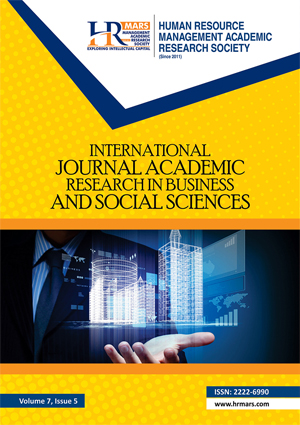
ISSN: 2222-6990
Open access
A perfect command of language rules is traceable to strict adherence to language theories. The theories of language are an essential component in studying and analyzing the root of many linguistic rules, principles and guidelines surrounding the structure and composition of language. Many contemporary linguistics and researchers in applied linguistics recently appraise language theories and consider it as light and wayout to recent problems surrounding the study of language. The current study observes that many speakers and writers have neglected language theories in the construction of their speech and write-ups, thus exposing them to grammatical errors and writing mistakes. The current study aims to explain theories attached to the origin and development of language. The study attempts to present a proposal that would make language theories a prerequisite to learn and teach languages. The path that language mostly follows in evolution, change and development makes the study adopt a descriptive approach to understand the flow of language origin, change, evolution and development. Thereafter, the study sees cognitive theory, behavioral theory, structural theory and the transformational generative theory as integral in teaching, studying and learning language. The outcome of the study reiterates that language theories must be prioritized and be taken into account while teaching and learning languages.
Abdullah, A. (1998). Modern Methods in Teaching Arabic, Al-Falah Library, 1st ed.
Abdul Aziz, I. A. (1999). Linguistic and Psychological Theories and the Teaching of Arabic. Riyadh: Imam Muhammad bin Saud Islamic University.
Abdul Majeed, I. (2011). Learning Theories and Their Applications in Linguistics: Acquiring Basic Linguistic Skills. Cairo: Dar Al-Kitab Al-Hadith.
Ali, A. W. (1971). Language and Society, Dar Nahdet Misr.
Chomsky, N. (1981) Lectures on Government and Binding. Foris, Dordrecht.
Douglas, B. (1994). Foundations of Language Learning and Teaching, translated by Dr. Abdo Al-Rajhi, Dr. Ali Ahmad Shaaban, Dar Al Nahda Al Arabiya, Beirut.
Fathi, A. Y. (1983). Teacher's Guide to the Basic Book for Teaching Arabic to Non-Native Speakers, revised by Sayyid Muhammad Badawi, Arab League Educational, Cultural and Scientific Organization, Tunis.
Hajar, M. (2016). Theory of Language Acquisition and Learning. Al-Oka. Retrieved from September 25, 2017, on http://www.alukah.net/literature_language/0/108179
Ibn-Jana, A. N. d. Characteristics. General Egyptian Book Organization, 4th ed., 1/34.
Jawdat, A. (1986). Methods of Teaching Arabic, Dar Al Fikr, Damascus, 2nd ed..
Kamal, B. (1997). Sociolinguistics, Dar Gharib, Cairo, 3rd ed.
Kawthar, H. K. (1997). Modern Trends in Curricula and Teaching Methods, Alam Al-Kutub, Cairo, 2nd ed.
Knox, A. (2020). Communication Accommodation Theory: Examining the Impact of Divergence on Social Media Discussion.
Kretzschmar, W. (2018). The Emergence and Development of English: An Introduction. 10.1017/9781108555777.
Munif, K. S. (2013). Constructivist Theory and Its Application in Teaching Arabic. Riyadh: Catalogs King Fahad National Library.
Qanawi, N. D. Developmental Psychology, Quba House for Printing, Publishing, and Distribution, 2/155.
Shawqi, D. (1960). History of Arabic Literature, Dar Al Maaref, Cairo.
Wajih, M. (2012). Theories of Language Acquisition and Learning. Dr. Wajih Morsi's Educational Website http://kenanaonline.com/users/wageehelmorssi/posts/402215
Zaid, S. A. & Fuad, H. (2011). Instructional Design between Theory and Practice. Amman: Dar Al-Maysarah for Publishing and Printing.
Bader, A. A. M., Azmi, M. N. L., & Hassan, I. (2025). Theories that Explain the Origin and Development of Language. International Journal of Academic Research in Business and Social Sciences, 15(4), 787–796.
Copyright: © 2025 The Author(s)
Published by HRMARS (www.hrmars.com)
This article is published under the Creative Commons Attribution (CC BY 4.0) license. Anyone may reproduce, distribute, translate and create derivative works of this article (for both commercial and non-commercial purposes), subject to full attribution to the original publication and authors. The full terms of this license may be seen at: http://creativecommons.org/licences/by/4.0/legalcode